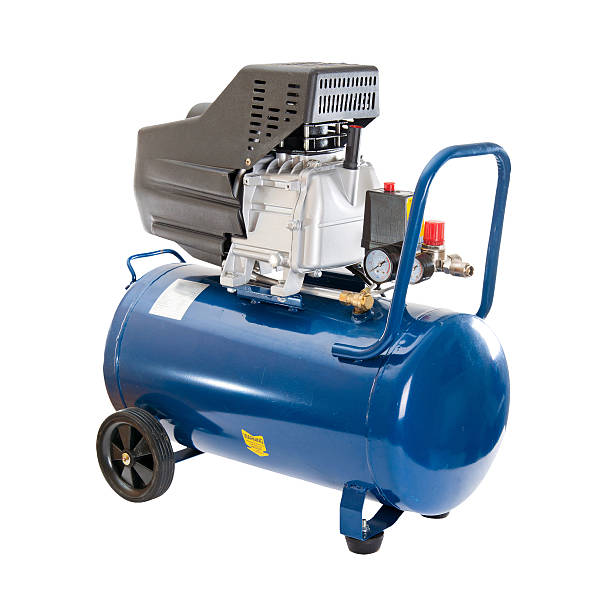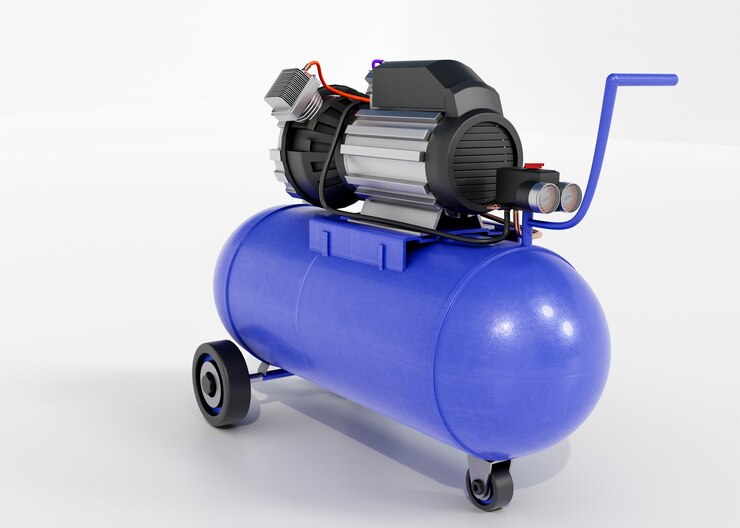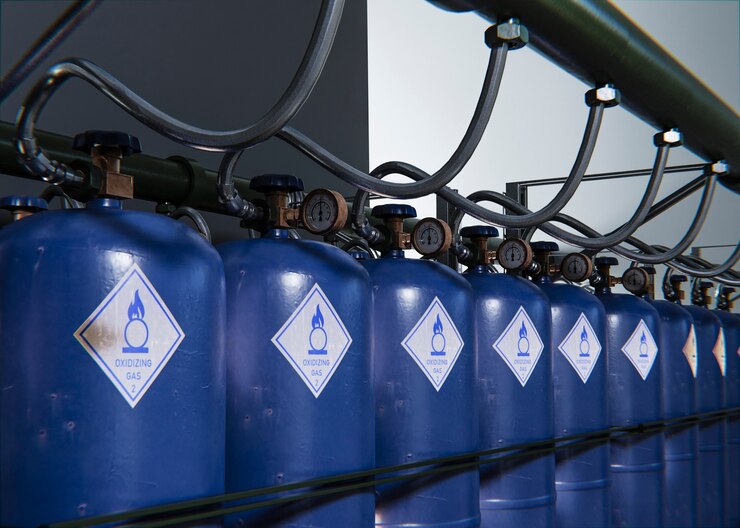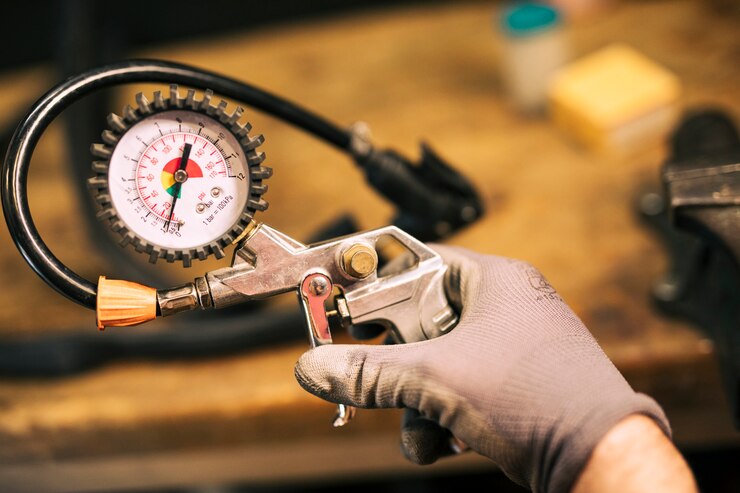Understanding Centrifugal Compressor Diaphragms: Function, Types & Benefits
Comprehending the Stages of Centrifugal Compressors
Gas is accelerated by revolving impellers in a centrifugal compressor diaphragm, which transforms kinetic energy into pressure. After entering the diaphragm’s diffuser portion, the gas’s velocity is lowered, which raises the pressure even further. Multiple stage compressor is frequently used by centrifugal compressors to achieve notable pressure improvements. An impeller, a diffuser contained in a diaphragm, and (sometimes) intake-guiding vanes make up each stage.
- Diffuser:
As the diaphragm’s stationary channel progressively expands, the flow area decreases and pressure rises, resulting in a reduction in gas velocity.
- Impeller:
The impeller is the revolving component that uses centrifugal force to impart velocity to the gas.
- Compressor with several stages:
To achieve large pressure ratios, a centrifugal compressor with numerous impeller-diffuser (and maybe intake guide vane) stages.
- Inlet guide vane (IGV):
The compressor’s performance is maximized by the adjustable vanes located upstream of the impeller, known as the inlet guide vane (IGV).
The Crucial Function of Centrifugal Compressor Diaphragms
The diaphragm of a centrifugal compressor has several functions.
- Diffuser Housing:
The diffuser’s sturdy housing is provided by the diaphragm, which also makes sure that the diffuser vanes get enough gas flow to facilitate effective pressure conversion.
- Flow Channelling:
In multi-stage compressors, the diaphragm has channels that route compressed gas from the diffuser of one stage to the impeller’s input of the next stage.
- Structural Support:
The diffuser and inlet guide vanes, if any, are supported structurally by the diaphragm, which keeps them positioned precisely inside the compressor.
Types of Centrifugal Compressor Diaphragms
Depending on the particular application and compressor design, diaphragms can have a variety of configurations. These are a few typical kinds:
- Diaphragms with Volute Casing:
These diaphragms offer a compact and effective design by incorporating the diffuser volute into their structure.
- Split diaphragms:
Designed to make accessing the diffuser and maintaining it easier.
- Annular diaphragms:
Typically used in high-speed compressors, these diaphragms have a ring-shaped construction.
When choosing a diaphragm material, it is important to take temperature, pressure, and the kind of gas being squeezed into account. For tough applications, common materials include high-alloy steels, cast iron, and stainless steel.

Preserving Maximum Efficiency: Centrifugal Compressor Diaphragm Upkeep
Centrifugal compressor diaphragm performance and smooth operation depend on routine maintenance. To avoid problems and increase their longevity, diaphragms need special maintenance. The following are important upkeep procedures:
- Inspection:
Examine the diaphragm regularly for indications of wear, corrosion, or fractures. Keep a watchful eye out for any damage or obstructions in the diffuser vanes and flow channels.
- Cleaning:
The diaphragm should be cleaned regularly to get rid of any buildup of impurities that might impede gas flow and lower performance.
- Repair or Replacement:
To protect compressor performance and safety, the diaphragm should be repaired or replaced as soon as noticeable damage is found.
Troubleshooting Centrifugal Compressor Diaphragm Problems
Several signs may point to possible problems with the diaphragm of the centrifugal compressor:
- Decreased compressor efficiency:
A diaphragm that is broken or not operating properly might result in less pressure gain, which lowers the compressor’s efficiency as a whole.
- Increased vibration:
Abnormal vibration during operation may be caused by excessive wear or fractures inside the diaphragm.
- Strange noises:
Pay attention to any strange noises coming from the compressor as they may indicate issues with the diaphragm or other parts.
It’s critical to look into the matter right away and take corrective action if you notice any of these symptoms to stop more harm or any safety risks.
What are the benefits of a centrifugal compressor diaphragm?
- Enhanced Compressor Efficiency:
Diaphragms help to efficiently convert pressure, which lowers energy consumption and operational costs. They do this by giving the gas a steady and optimized flow route through the diffuser.
- Better Flow Control:
By minimizing pressure losses and maximizing compressor performance overall, the diaphragm channels’ design guarantees the compressed gas flows between stages in a directed and seamless manner.
- Simplified Maintenance:
By providing simpler access to the diffuser for cleaning, inspection, and possible repairs, split casing diaphragm designs, for example, save maintenance expenses and downtime.
- Versatility for a Wide Range of Applications:
Diaphragms may be used in a variety of industrial applications, from oil and gas to chemical processing since they can be made of different materials to withstand a wide range of pressures, temperatures, and the particular gas being compressed.
- Improved Structural Integrity:
The diaphragm’s sturdy construction offers the diffuser and intake guide vanes if any essential structural support, guaranteeing their exact placement and preserving compressor performance.
Unleash Peak Performance: How Centrifugal Compressor Diaphragms Make a Difference
The workhorses of industry, centrifugal compressors raise gas pressure to fuel various operations. However, the centrifugal compressor diaphragm is a secret hero found inside these devices. Diaphragms, which are frequently disregarded, are essential to achieving optimal compressor performance. Let’s explore the realm of diaphragms and see how they help achieve maximum effectiveness.
The Hidden Hero at Work:
- Consider a centrifugal compressor with many stages. Each stage has a diffuser portion after an impeller that accelerates gas. The magic happens inside this diffuser, which is contained within the diaphragm. The diaphragm guides the high-velocity gas via carefully crafted vanes as it enters the diffuser. By progressively expanding the flow area, these vanes efficiently transform kinetic energy into pressure.
- Beyond Just Housing:
The diaphragm does more than only hold the diffuser in place. It also serves as a flow director, directing compressed gas from the diffuser of one stage to the input of the subsequent one. To maximize pressure gain, each step builds upon the preceding one with this directed, steady flow that reduces pressure losses. Furthermore, the diaphragm maintains the correct alignment of the diffuser and inlet guide vanes (if any) for maximum performance by providing essential structural support.
Conclusion:
The centrifugal compressor diaphragm plays a vital role that is frequently disregarded. For maintenance and troubleshooting support related to centrifugal compressors, contact LEiYAO Compressors. Our skilled engineering staff is available to assist you in maintaining the smooth and effective operation of your centrifugal compressors.



